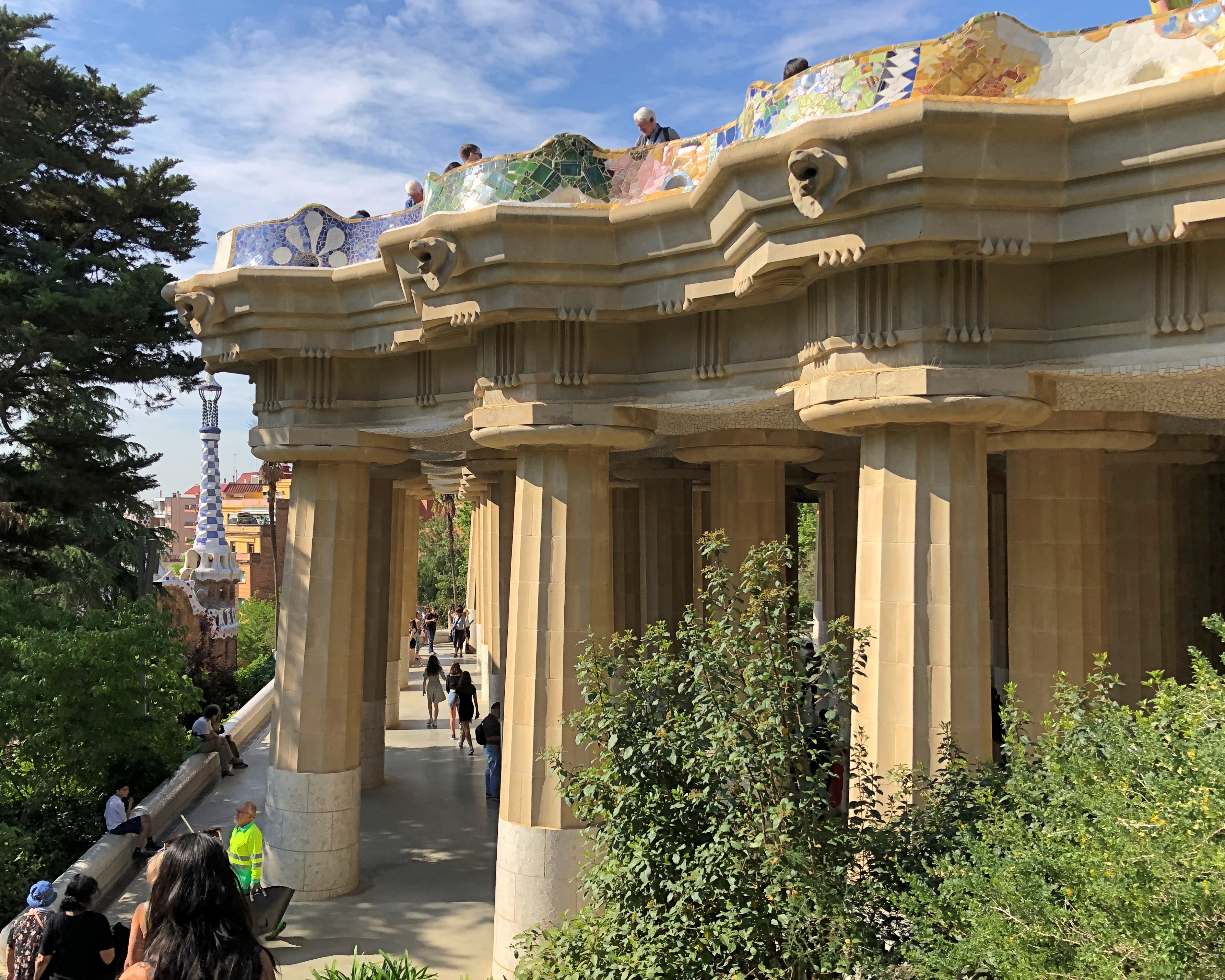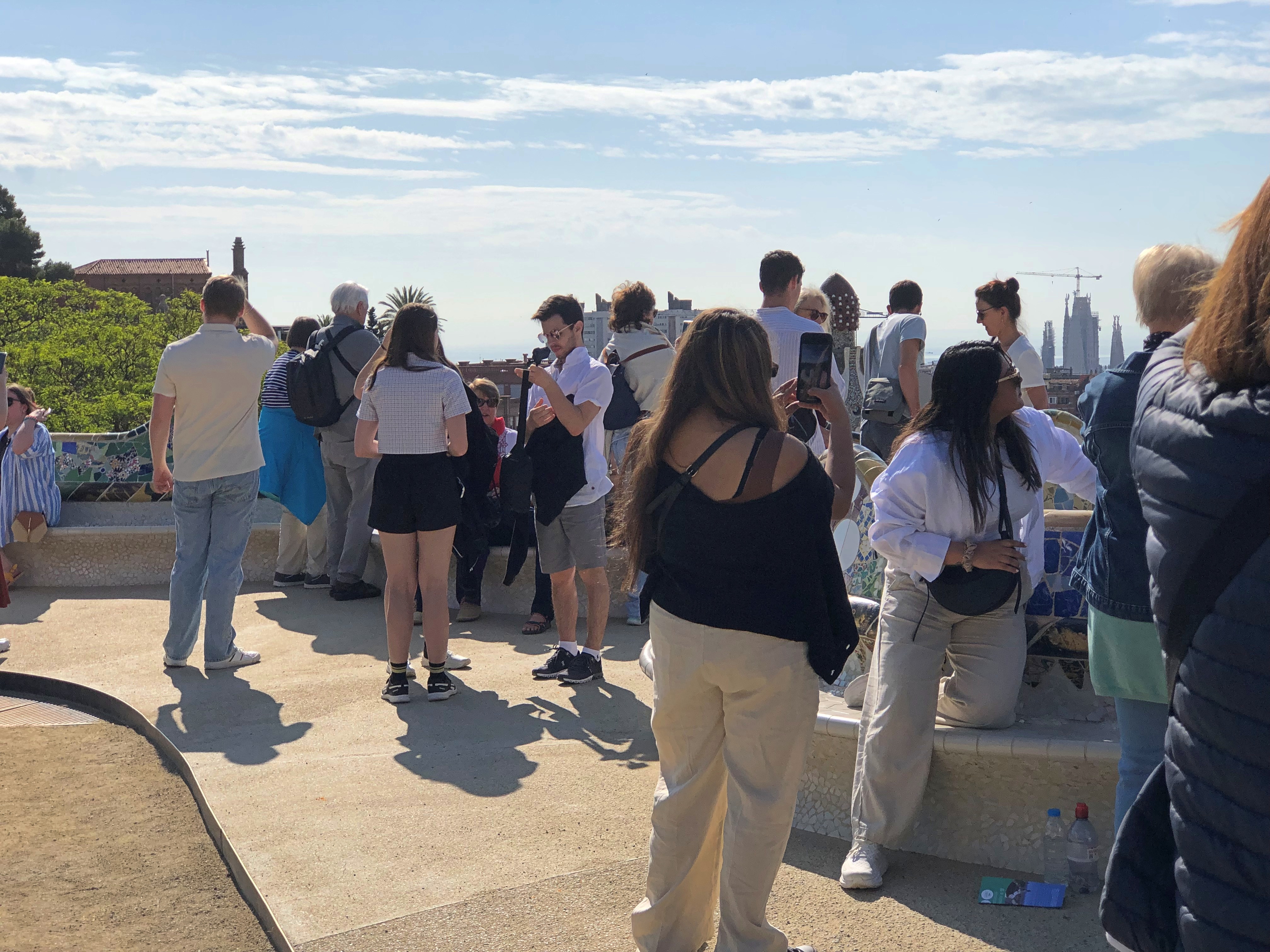It has happened to me in a lot of places over the years, and I can’t quite account for it. In various parts of the United States, but also in Europe and Australia – anywhere I might blend in with a crowd, including places where I don’t speak the language. What happens: a stranger asks me directions. It happened in Barcelona, too, during our return from Parc Güell (Güell Park), down a fairly steep slope in the Gràcia district.
This street wasn’t our actual path, but branches off from it and gives some idea of the hill you need to climb – partly assisted by an outdoor escalator at one point – to reach the park.
It was a neighborhood of political graffiti as well. A whiff of old Barcelona, I guess. Much of it in English for some reason.

While coming down the slope, Yuriko had gotten somewhat ahead of me, so I was walking alone for a few moments. A woman with some small children in tow asked me directions to the park in Catalan (or Spanish). I was able to point in the direction I’d come and say “park,” which conveniently is the same in all the relevant languages. She seemed happy to hear it, and I was certain I’d given her some correct information.
Parc Güell is a large place, though only a section of it includes architectural elements by Antoni Gaudí. The city has charged admission to that section for the last 10 years or so.
“[Industrialist and Gaudí friend] Eusebi Güell entrusted Gaudí with the project of making an urbanization [sic, neighborhood] for wealthy families on a large estate he had acquired in the area popularly known as Muntanya Pelada,” the park’s web site (machine translated) says. “Its situation was unbeatable, in a healthy environment and with splendid views over the sea and the Plan de Barcelona.
“In October 1900, the land began to be leveled and the works went at a good pace. On January 4, 1903, a description published in the Yearbook of the Association of Architects stated that the two pavilions at the entrance, the main staircase, the shelter or waiting area, the external fence, the viaducts and part of the large esplanade, as well as the water evacuation system [sic, were complete? Under way?]”
In any case, only two houses were ever sold, so as a new neighborhood, the place was a failure. Eventually Güell’s heirs sold the would-be development to the city. The common-area work that Gaudí did remained, to great acclaim in future years.
A path from the entrance leads to a large esplanade, or perhaps best called a terrace, originally planned as a place for outdoor shows.
An undulating bench marks the edge of the esplanade.

It offers a sweeping view of Barcelona, plus other Gaudí structures in the park.

Gaudí collaborator Josep M. Jujol did the bench mosaics.

Stairs lead down from the esplanade, which is supported by 86 columns that form the Hypostyle Hall. It was supposed to have been a sheltered marketplace.

From there, the Dragon Stairs. The figure is actually a salamander, I’ve read.

At the base of the stairs is the Porter’s Lodge, which houses exhibits about the 19th- and 20th-century history of Barcelona. Its interior walls are bright colors.
Other parts of the park include the paths and viaducts that Gaudí designed. We did some wandering.

I was reminded a bit of Brackenridge Park in San Antonio, but the similarities aren’t really that deep.

Lush bursts of flowers adorn parts of the park.


Springtime in Barcelona. There’s a romcom in there somewhere. Probably not a very good one, but how many are?


